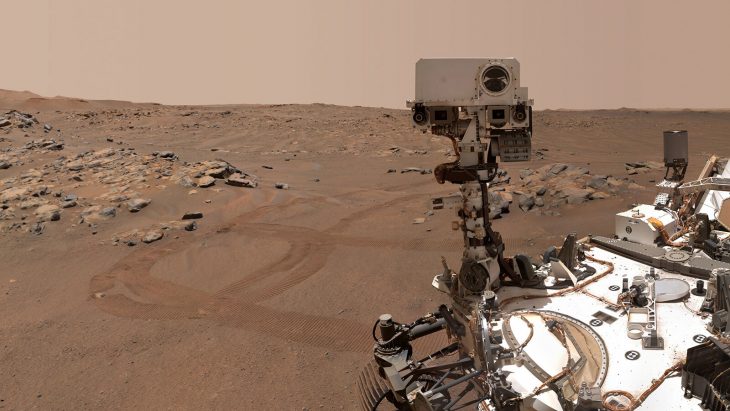Two weeks after it went into hibernation on Mars, the Perseverance rover is set to trundle again. With communications returning to normal between Mars and Earth, the rover is scoping the area as it remains parked between two outcrops. The rover is imaging the area and studying the weather as engineers chart its course towards another possible location to collect samples to be returned to Earth.
“I’m back to work, parked between these two beautiful outcrops. Been doing some imaging, weather studies, chemistry experiments and getting a software update too,” the rover tweeted as it came out of solar conjunction.
Since landing on Mars on February 18, 2021, Perseverance has been hunting for signs of ancient microscopic life in order to collect and store samples of Martian rock and sediment to be retrieved by planned future missions for closer study on Earth. The work had come to a standstill as both Earth and Mars were in opposite directions of the Sun and their views were obscured from each other.
Scientists hold themselves from sending any new data or command to the rovers or probes around the red planet since it’s impossible to predict what information might be lost due to interference from charged particles from the Sun. However, with the period now over and Mars out of opposition from the Sun, science is set to take centre stage on the Red Planet.
INGENUITY REVS FASTER
While the rover is scoping its field of view, the Ingenuity helicopter, which arrived on the planet with Perseverance, revved again. The rotorcraft completed its 14th flight, which was postponed following the solar conjunction. The helicopter geared up to begin flying with a higher rotor speed to compensate for decreasing atmospheric density caused by seasonal changes on Mars.
Ahead of the flight, engineers had performed a high-speed spin test at 2,800 rpm on the ground after which the brief flight was undertaken. The high-speed spin test was completed successfully on September 15 when motors spun the rotors up to 2,800 rpm, briefly held that speed, and then spun the rotors back down to a stop.
The Jet Propulsion Laboratory (JPL), which is flying the aircraft on the alien world had said that it was getting more difficult every day to fly on Mars. The difficulty is coming from the atmospheric density, which is falling in an already low-dense Martian air. With Ingenuity in its sixth month of operation, the mission has entered a season where the densities in Jezero Crater are dropping to even lower levels and engineers expect it to fall 1.0 per cent of Earth’s density in the coming months.







Leave a Reply